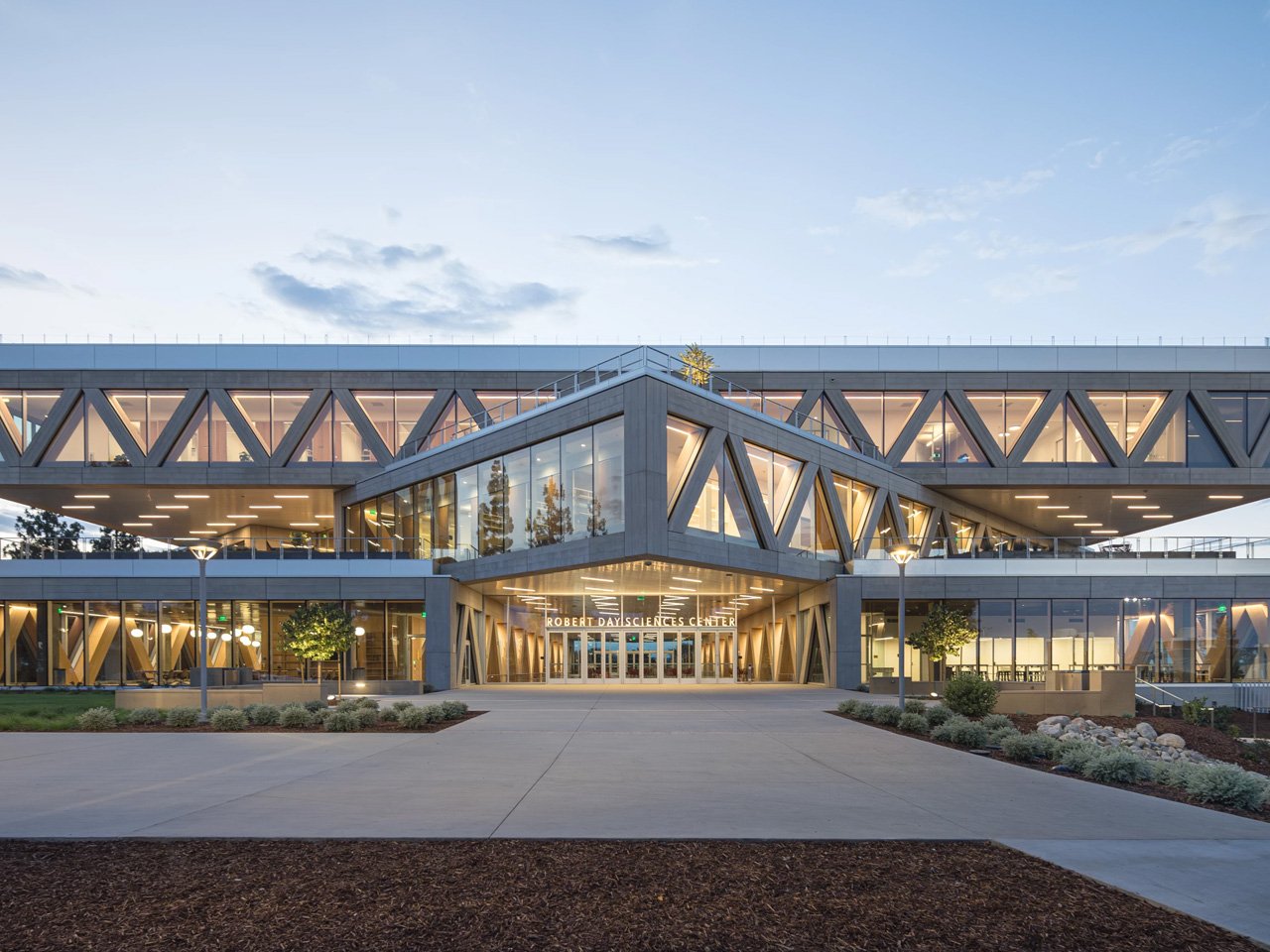The Robert Day Sciences Center stands at Claremont McKenna College like a game of architectural Jenga frozen mid-play. Bjarke Ingels Group designed the 135,000-square-foot building with volumes stacked atop one another, each pair rotated 45 degrees from the floor below. The result creates dramatic cantilevers and outdoor terraces that break away from the traditional campus aesthetic. Commissioned in 2020 and completed this fall, the building marks BIG’s first completed project in Los Angeles and serves as the anchor for the firm’s larger master plan for the college’s Roberts Campus.
The design responds directly to its Southern California setting. Those rotating volumes aren’t just sculptural—they create shaded outdoor spaces essential for the region’s climate. Each rotation generates terraces and balconies that encourage students to step outside between lab sessions. The concrete construction provides thermal mass that helps regulate interior temperatures naturally. BIG positioned the building to maximize natural light while minimizing heat gain, a balance that matters when you’re housing sensitive research equipment.
Designer: Bjarke Ingels Group
A Building Designed Around Research
The center brings together multiple scientific disciplines under one roof. Students studying genealogical research, climate science, and neuroscience share labs and collaboration spaces across the building’s multiple floors. This interdisciplinary approach shaped the entire layout. Open research areas sit alongside flexible teaching spaces, allowing faculty to adapt rooms as research needs evolve. The building accommodates 1,400 students, creating a critical mass of scientific inquiry that the college previously lacked in a single dedicated facility.
The ground floor opens directly to the campus, inviting non-science students to engage with what’s happening inside. Large windows reveal active lab spaces, demystifying the research process. Upper floors become progressively more specialized, with advanced equipment and quieter study areas as you move higher. This vertical organization creates a natural hierarchy while maintaining visual connections between levels through strategically placed atriums and double-height spaces.
Art Meets Science
A 30-foot sculpture suspended in the building’s central atrium captures the intersection of art and scientific inquiry. The installation visualizes Earth’s magnetosphere through 18 metal rings and 1,476 hand-blown glass spheres. It’s not decorative—the piece translates complex scientific data into physical form, helping students grasp abstract concepts through spatial experience. The sculpture changes appearance as you move through the building, offering different perspectives from each floor.
The Robert Day Sciences Center represents the first phase of BIG’s broader vision for transforming the campus. Future buildings will continue the language of stacked volumes while creating courtyards and gathering spaces between structures. The master plan aims to knit together existing campus buildings with new construction, building a cohesive scientific district. For now, this single building establishes a new architectural vocabulary that’s both bold and deeply rooted in its place.
The post BIG’s First LA Building Stacks Like Architectural Jenga At 45 Degrees first appeared on Yanko Design.

